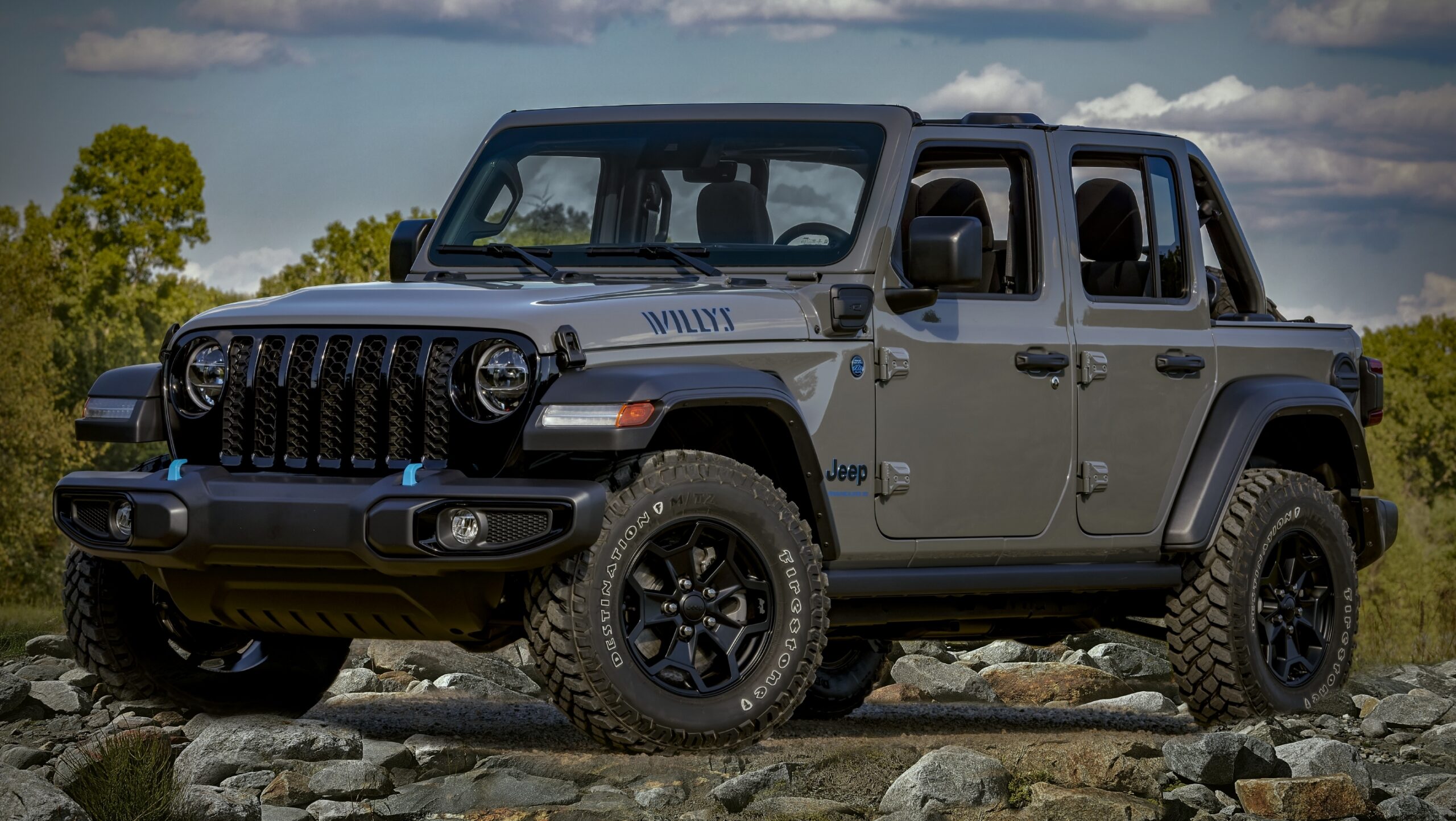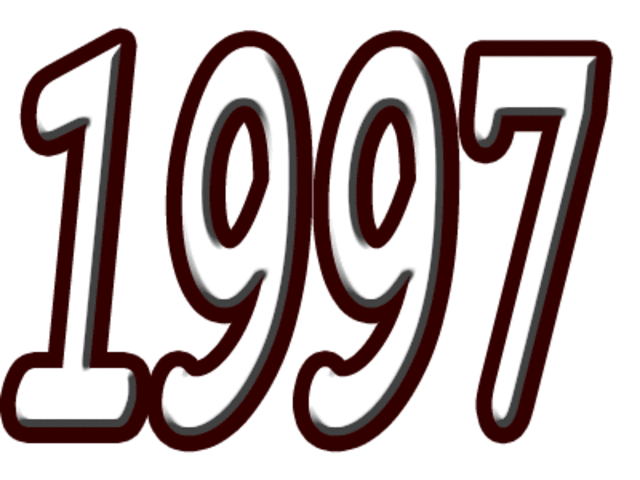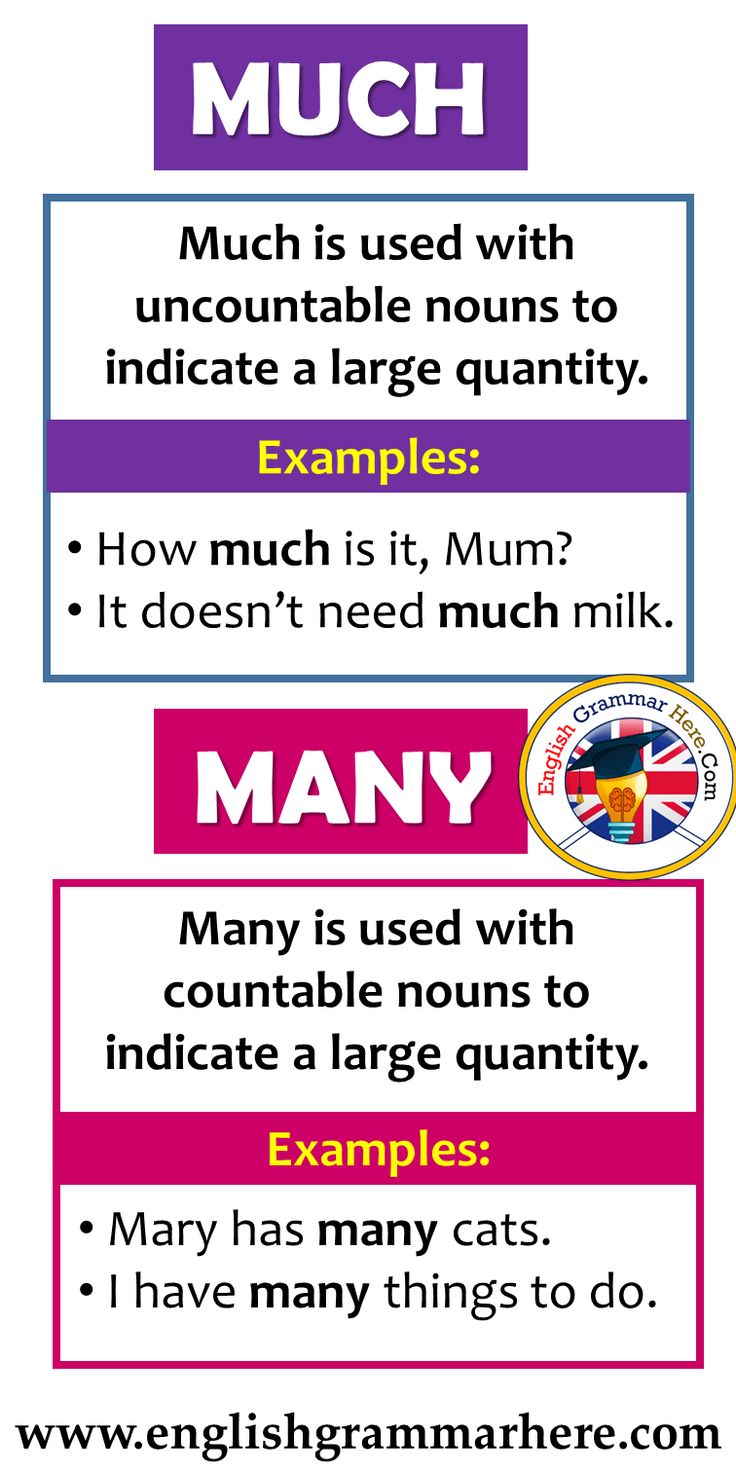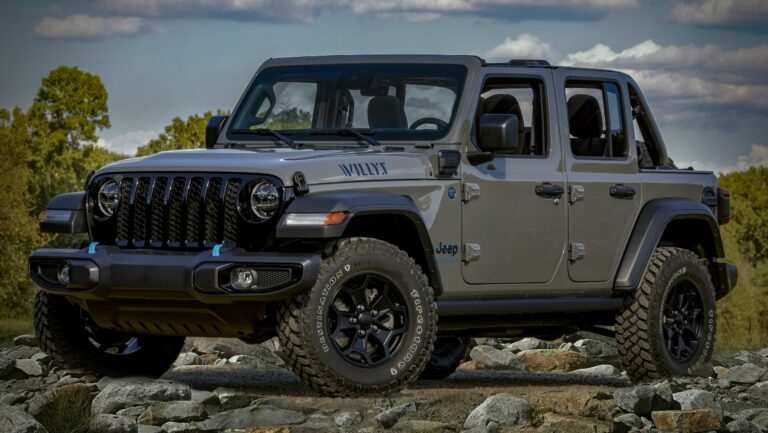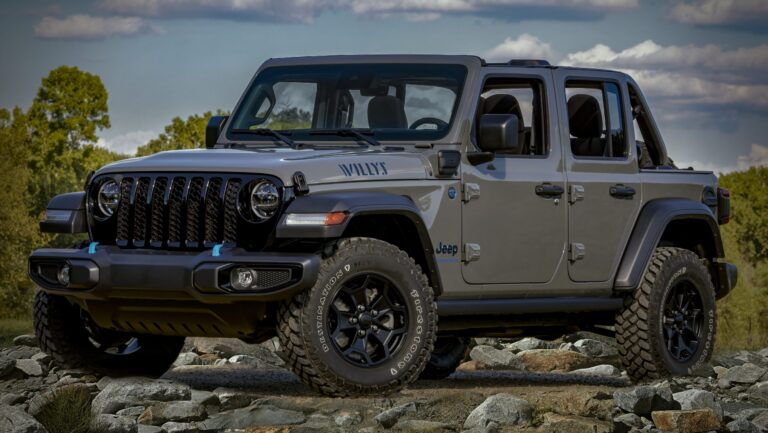Jeep 4.0 For Sale: Your Comprehensive Guide to a Legendary Powertrain
Jeep 4.0 For Sale: Your Comprehensive Guide to a Legendary Powertrain jeeps.truckstrend.com
For decades, a specific engine has powered some of the most iconic and beloved Jeep vehicles, cementing its place in automotive history as a symbol of rugged reliability and unwavering performance: the Jeep 4.0L inline-six engine. When you see "Jeep 4.0 For Sale," you’re not just looking at a vehicle; you’re looking at a piece of engineering legend. This engine, primarily the AMC-designed 4.0-liter straight-six (also known as the PowerTech I6), is celebrated by off-road enthusiasts, DIY mechanics, and daily drivers alike for its legendary durability, simplicity, and surprising power.
From the trail-blazing Cherokee XJ to the quintessential Wrangler YJ and TJ, and the more refined Grand Cherokee ZJ and WJ, the 4.0L engine served as the heart of a generation of Jeeps. Its reputation for being "bulletproof" and capable of racking up hundreds of thousands of miles with proper maintenance makes it a highly sought-after commodity in the used vehicle market. This comprehensive guide will delve into everything you need to know about buying or selling a Jeep equipped with this legendary powerplant, offering insights, practical advice, and essential considerations for anyone looking to own a piece of automotive history.
Jeep 4.0 For Sale: Your Comprehensive Guide to a Legendary Powertrain
The Legend Under the Hood: Why the 4.0L Endures
The 4.0-liter inline-six engine is arguably one of the most successful and revered engines ever produced by Jeep (and its predecessors, AMC). Introduced in 1987, it quickly gained a reputation for its robust design and impressive longevity.
Key Characteristics and Benefits:
- Simple and Robust Design: The 4.0L is a naturally aspirated, overhead valve (OHV) inline-six. Its cast-iron block and cylinder head contribute to its immense durability. Unlike more complex modern engines, it eschews variable valve timing, direct injection, and other intricate systems, making it incredibly straightforward to maintain and repair.
- Legendary Reliability: This engine is famous for its ability to run for well over 200,000 miles, with many examples exceeding 300,000 or even 400,000 miles with diligent maintenance. Common issues are well-documented and typically easy to address, contributing to its "bulletproof" reputation.
- Ample Low-End Torque: With approximately 190 horsepower and 225 lb-ft of torque (figures vary slightly by year and model), the 4.0L might not win drag races, but its power delivery is perfectly suited for its intended purpose. The inline-six configuration provides excellent low-end torque, making it superb for crawling over obstacles off-road or pulling moderate loads.
- Ease of Maintenance and Repair: Due to its simple design and widespread use, parts for the 4.0L engine are readily available and often inexpensive. There’s a vast community of owners, mechanics, and online resources dedicated to these engines, meaning solutions to virtually any problem are just a search away. Many repairs can be tackled by a DIY enthusiast with basic tools.
- Abundant Aftermarket Support: For those looking to modify their Jeep, the 4.0L platform enjoys unparalleled aftermarket support. From performance upgrades to heavy-duty cooling systems and engine accessories, the options are limitless, allowing owners to tailor their vehicle to their specific needs, whether for hardcore off-roading or improved daily driving.

Its enduring appeal lies in this combination of steadfast reliability, a user-friendly design, and a performance profile that perfectly matches the spirit of a Jeep.
Models Featuring the 4.0L: A Buyer’s Guide
The 4.0L engine was a staple across several popular Jeep platforms. Understanding the nuances of each model can help you decide which "Jeep 4.0 For Sale" best suits your needs.
-
Jeep Cherokee (XJ) (1987-2001):
- Description: The XJ Cherokee is a compact SUV known for its unibody construction, excellent approach/departure angles, and surprisingly nimble on-road manners. It’s often considered the most versatile 4.0L platform.
- Pros: Lightweight, highly capable off-road, massive aftermarket support, typically the most affordable 4.0L option, easy to park.
- Cons: Unibody can be prone to rust, rear seat room can be tight, ride can be stiff compared to more modern SUVs.
- Ideal For: Budget-conscious off-roaders, first-time Jeep owners, daily drivers who want something unique and capable.
-
Jeep Wrangler (YJ) (1991-1995) & TJ (1997-2006):
- Description: The iconic open-top Jeep. The YJ is distinguished by its square headlights and leaf-spring suspension, while the TJ features round headlights and a more comfortable coil-spring suspension.
- Pros: Unmatched off-road capability, removable top and doors for open-air driving, legendary "Jeep experience."
- Cons: Less practical for daily driving (limited cargo, less refined ride), higher price point, especially for TJs.
- Ideal For: Dedicated off-roaders, enthusiasts seeking the classic Jeep lifestyle, weekend warriors.
-
Jeep Grand Cherokee (ZJ) (1993-1998) & WJ (1999-2004):
- Description: A more luxurious and refined SUV offering a blend of off-road capability and on-road comfort. The ZJ features solid axles front and rear, while the WJ introduced a more sophisticated unibody design and improved interiors.
- Pros: More comfortable ride, better interior amenities, good towing capacity (for its class), still very capable off-road.
- Cons: Can be heavier and less agile than an XJ, some WJ models came with the Dana 44a aluminum rear axle which is less robust for heavy modification than the XJ/TJ/ZJ’s steel axles.
- Ideal For: Families needing more space, those wanting a balance of comfort and capability, Overlanding setups.
-
Jeep Comanche (MJ) (1987-1992):
- Description: The pickup truck version of the XJ Cherokee.
- Pros: Truck bed utility, shares many XJ components.
- Cons: Rarer to find, typically commands higher prices due to collectibility.
- Ideal For: Collectors, those needing a compact Jeep pickup.
What to Look For When Buying a Jeep 4.0L
Purchasing a used Jeep with a 4.0L engine requires a thorough inspection. While the engine itself is robust, the rest of the vehicle has aged.
-
Engine & Drivetrain:
- Oil Leaks: The most common is the rear main seal (RMS). While often not severe, it’s a known issue. Valve cover gaskets can also leak. Check for drips under the vehicle.
- Cooling System: Overheating is the 4.0L’s Achilles’ heel if not maintained. Check the radiator (look for green coolant residue, indicating a leak), hoses, water pump, and thermostat housing. Ensure the electric fan engages. Look for muddy or rusty coolant, indicating neglect.
- Exhaust Manifold: Cracks in the exhaust manifold are common, leading to ticking noises, especially on cold start. Easy to replace.
- Transmission: Check fluid color and smell (should be red, not burnt). Test shifting through all gears, both automatic and manual. Listen for grinding or slipping. The AW4 automatic is very reliable.
- Transfer Case: Check for leaks around the seals. Test engagement of 2WD, 4-High, and 4-Low. Listen for grinding noises.
- Axles: Inspect differential covers for leaks. Check for play in axle shafts by grabbing the tires at 12 and 6 o’clock, then 3 and 9 o’clock. Listen for gear whine on the test drive.
-
Body and Frame:
- Rust: This is CRITICAL, especially in northern climates. Inspect the frame rails (on Wranglers/Grand Cherokees) or unibody frame rails (on Cherokees), rocker panels, floorboards, and fender wells. Minor surface rust is manageable, but extensive rot is a deal-breaker.
- Undercarriage: Look for dents, scrapes, or bent components, which indicate off-road abuse.
-
Suspension and Steering:
- Bushings: Inspect all rubber bushings on control arms, sway bars, and leaf springs (YJ/XJ). Worn bushings lead to clunks and poor handling.
- Ball Joints/Tie Rods: Check for play in the steering linkage. Worn components contribute to the dreaded "death wobble" (violent steering wheel shake).
- Shocks: Look for leaks or excessive bouncing.
-
Electrical and Interior:
- Test all lights, gauges, power windows, HVAC system, and radio. While less critical for performance, these can be costly to repair.
-
Maintenance Records: A vehicle with a documented history of regular oil changes, coolant flushes, and transmission services is a strong indicator of a well-cared-for vehicle.
-
Test Drive: Listen for unusual noises (clunks, squeaks, grinding), feel for vibrations, check brake performance, and assess steering responsiveness. Pay attention to how it shifts and accelerates.
Pricing Your Jeep 4.0L: Factors Influencing Value
The price of a "Jeep 4.0 For Sale" can vary wildly depending on several factors.
- Condition: This is the primary determinant. A mechanically sound, rust-free example with a clean interior will command a premium. Rust, significant mechanical issues, or a heavily abused exterior will drastically lower the price.
- Mileage: While the 4.0L is known for longevity, lower mileage examples generally fetch higher prices. However, a well-maintained high-mileage Jeep can be a better buy than a neglected low-mileage one.
- Model and Trim: Wranglers (especially TJs) typically command the highest prices, followed by Grand Cherokees and then Cherokees. Special editions, such as the XJ’s Country or Limited trims, or Wrangler Rubicons (though Rubicons often came with the 4.0L or the 4.0L and later 4.7L V8), can also influence value.
- Modifications: Thoughtful, well-executed modifications (e.g., quality lift kit, larger tires, heavy-duty bumpers, winches) can add value, especially if they appeal to the buyer’s intended use. Poorly done or extreme modifications, however, can detract from value or make it harder to sell.
- Location: Prices can fluctuate regionally based on demand, climate (rust-prone areas), and local market conditions.
- Documentation: Comprehensive service records can add value and peace of mind for the buyer.
Estimated Price Ranges for Jeep 4.0L Models (Highly Variable):
| Model | Poor Condition (Parts/Project) | Fair Condition (Needs Work) | Good Condition (Daily Driver) | Excellent Condition (Collector/Turn-key) |
|---|---|---|---|---|
| Jeep Cherokee (XJ) | $1,000 – $2,500 | $2,500 – $5,000 | $5,000 – $9,000 | $9,000 – $15,000+ |
| Jeep Wrangler (YJ) | $2,000 – $4,000 | $4,000 – $7,000 | $7,000 – $12,000 | $12,000 – $20,000+ |
| Jeep Wrangler (TJ) | $3,000 – $6,000 | $6,000 – $10,000 | $10,000 – $18,000 | $18,000 – $30,000+ |
| Jeep Grand Cherokee (ZJ) | $1,000 – $3,000 | $3,000 – $6,000 | $6,000 – $9,000 | $9,000 – $15,000+ |
| Jeep Grand Cherokee (WJ) | $1,500 – $3,500 | $3,500 – $7,000 | $7,000 – $10,000 | $10,000 – $18,000+ |
Disclaimer: These prices are rough estimates and can fluctuate significantly based on market demand, specific year, trim level, modifications, and geographical location. Highly desirable or rare examples can exceed these ranges.
Tips for a Successful Purchase (or Sale)
Whether you’re buying or selling a Jeep 4.0L, a strategic approach will yield the best results.
For Buyers:
- Do Your Homework: Research common issues for the specific model year you’re interested in. Forums like JeepForum.com, NAXJA.org (for XJs), and WranglerForum.com are invaluable resources.
- Inspect Thoroughly: Don’t skip the pre-purchase inspection. If you’re not mechanically inclined, pay a trusted mechanic (preferably one familiar with Jeeps) to perform a thorough check. This small investment can save you thousands later.
- Check for Rust, Then Check Again: Rust is the ultimate killer of these vehicles. Bring a flashlight and get underneath. Don’t be afraid to poke around.
- Test Everything: From the 4WD system to every button and knob in the interior.
- Negotiate: Be prepared to negotiate based on the vehicle’s condition and any identified issues. Factor in potential repair costs.
- Don’t Rush: There are plenty of 4.0L Jeeps out there. Wait for the right one.
For Sellers:
- Be Transparent: Honesty about the vehicle’s condition, including any known flaws or quirks, builds trust and leads to smoother transactions.
- Clean It Up: A clean, well-presented vehicle, inside and out, significantly impacts perceived value.
- Document Everything: Gather all maintenance records, receipts for parts, and details of any modifications. This proves you’ve cared for the vehicle.
- Take Great Photos: High-quality, well-lit photos from multiple angles (interior, exterior, engine bay, undercarriage) are crucial for attracting serious buyers.
- Set a Realistic Price: Research similar Jeeps in your area and price accordingly. Be prepared to justify your price with the vehicle’s condition and history.
- Highlight the 4.0L: Emphasize the legendary engine in your listing. It’s a major selling point.
Potential Challenges and Solutions
While the 4.0L is praised for its reliability, owning an older vehicle comes with its own set of challenges.
- Challenge: Rust: Especially in regions with road salt, rust can eat away at the frame, unibody, and body panels.
- Solution: For buyers, a pre-purchase inspection focused on rust is vital. For owners, diligent washing, rustproofing, and addressing small rust spots early can prolong the vehicle’s life. Extensive rust may require professional fabrication or render the vehicle a parts donor.
- Challenge: Cooling System Vulnerabilities: Overheating can occur if the cooling system isn’t properly maintained (clogged radiator, old water pump, faulty thermostat).
- Solution: Proactive maintenance: flush the coolant regularly, replace the thermostat, water pump, and radiator every 100k-150k miles, and ensure the electric fan functions correctly. Upgraded cooling components are also available.
- Challenge: "Death Wobble": A violent, uncontrollable shaking of the front end, particularly at highway speeds after hitting a bump.
- Solution: This is almost always caused by worn steering or suspension components (track bar, ball joints, tie rods, control arm bushings). Diagnosis and replacement of worn parts are necessary. It’s not an engine issue, but a common Jeep concern.
- Challenge: Fuel Economy: These are older, heavy vehicles with a robust engine. Don’t expect Prius-like MPG.
- Solution: Accept it as part of the "Jeep thing." Regular maintenance (tune-ups, proper tire pressure) can optimize what economy is available.
- Challenge: Ride Quality (especially YJ/modified XJ/TJ): Can be stiff, bouncy, or noisy compared to modern vehicles.
- Solution: For daily drivers, the TJ and Grand Cherokees offer a more comfortable ride. Aftermarket suspension upgrades can improve ride quality, but it’s a trade-off for off-road performance.
Conclusion
The "Jeep 4.0 For Sale" represents more than just a used vehicle; it’s an opportunity to own a piece of automotive legacy. The AMC 4.0L inline-six engine is a testament to straightforward engineering, unparalleled reliability, and enduring performance. Whether you’re an aspiring off-roader, a DIY enthusiast looking for a project, or simply seeking a rugged and dependable daily driver, a Jeep equipped with this legendary powerplant offers a unique blend of capability, charm, and community support.
While careful inspection and an understanding of potential challenges are essential when buying an older vehicle, the rewards of owning a 4.0L Jeep far outweigh the minor hurdles. With proper care, these vehicles are known to run for hundreds of thousands of miles, proving their worth time and time again. Embrace the "Jeep thing," and you’ll find yourself part of a passionate community, driving a vehicle built to conquer both the concrete jungle and the wildest trails.
Frequently Asked Questions (FAQ)
Q1: Is the Jeep 4.0 engine reliable?
A1: Yes, the Jeep 4.0L inline-six engine is widely considered one of the most reliable engines ever produced. It’s known for its robust design and ability to last for hundreds of thousands of miles with proper maintenance.
Q2: What are the most common problems with the 4.0L engine?
A2: The most common issues are minor oil leaks (especially the rear main seal), exhaust manifold cracks (leading to a ticking sound), and cooling system vulnerabilities if not maintained (e.g., radiator clogs, old water pumps leading to overheating). These are generally well-documented and manageable.
Q3: Which Jeep models came with the 4.0L engine?
A3: The 4.0L engine was primarily found in the Jeep Cherokee (XJ, 1987-2001), Jeep Wrangler (YJ 1991-1995, TJ 1997-2006), Jeep Grand Cherokee (ZJ 1993-1998, WJ 1999-2004), and the Jeep Comanche (MJ pickup, 1987-1992).
Q4: What is good mileage for a Jeep 4.0L?
A4: Due to its durability, a 4.0L with 150,000 to 200,000 miles is not uncommon and can still have plenty of life left if well-maintained. Many owners report exceeding 300,000 miles. Condition and maintenance history are more important than just the odometer reading.
Q5: Is it expensive to maintain a Jeep 4.0L?
A5: Generally, no. Parts are readily available, often inexpensive, and the engine’s simple design makes many repairs manageable for the average DIY mechanic. Labor costs can vary, but the overall maintenance cost is typically lower than more complex modern engines.
Q6: Can I use a Jeep 4.0L as a daily driver?
A6: Absolutely! Many people use 4.0L Jeeps (especially XJs and Grand Cherokees) as daily drivers. While they may lack some modern comforts and fuel efficiency, their reliability and ruggedness make them practical for everyday use. Wranglers can be daily driven but offer less comfort and cargo space.
Q7: What’s the "death wobble"?
A7: "Death wobble" is a severe, violent shaking of the front end of a Jeep (common in solid-axle vehicles) that occurs, usually at highway speeds, after hitting a bump. It’s not an engine issue but rather caused by worn components in the front suspension and steering system (e.g., track bar, ball joints, tie rod ends, control arm bushings). It requires immediate attention and repair of the worn parts.
